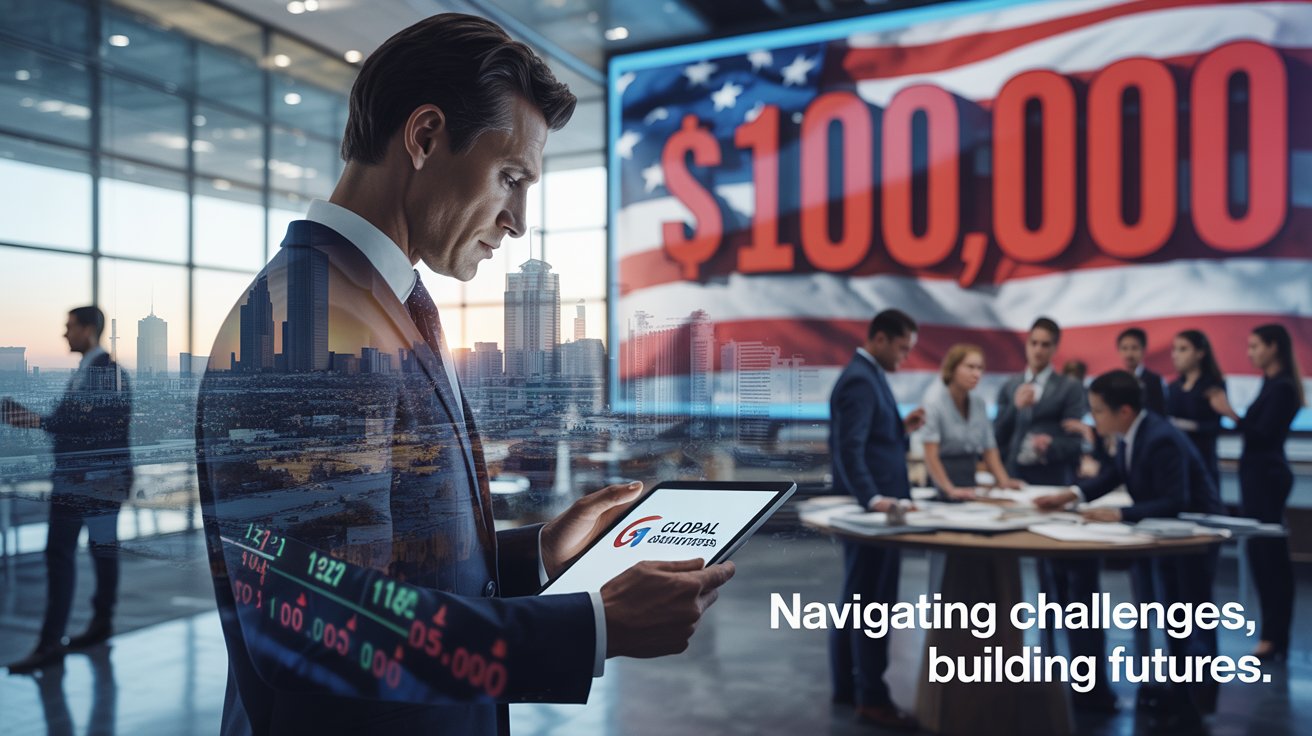
The United States has recently announced a dramatic policy shift that could reshape the global labor market: a new $100,000 annual fee for companies sponsoring workers under the H-1B visa program. This move has significant implications for technology firms, startups, multinational corporations, and global talent. Since H-1B visas are crucial for filling high-skill positions in fields like software engineering, artificial intelligence, and data science, this new cost may influence hiring strategies, investment flows, and international competitiveness.
In this article, we’ll explore the financial impact of the new fee, its effects on both companies and workers, and what investors should watch closely in 2025.
What Is the H-1B Visa?
The H-1B visa is a non-immigrant work visa that allows U.S. companies to employ highly skilled foreign workers, particularly in IT, engineering, and finance. Tech giants like Google, Amazon, Microsoft, and thousands of startups depend on this program to recruit top global talent.
Until now, companies paid application fees, legal expenses, and compliance costs that averaged $5,000 to $10,000 per worker. The new proposal raises that burden exponentially — $100,000 per employee, per year.
Why Is the US Increasing H-1B Visa Fees?
The U.S. government justifies the increase as a way to:
- Protect domestic workers by discouraging over-reliance on foreign labor.
- Generate revenue for immigration administration and workforce programs.
- Encourage investment in American talent pipelines, such as STEM education.
However, critics argue this policy is more of a barrier to innovation and could push companies to relocate jobs abroad instead of hiring locally.
Financial Impact on Technology Companies
1. Rising Operating Costs
Tech companies that employ thousands of H-1B workers may face billions in additional annual expenses. For example, a company with 1,000 H-1B employees would now need to budget $100 million per year just in visa fees.
2. Shift in Hiring Strategy
Startups and mid-sized firms — already operating with tight budgets — will struggle to justify the added cost. This could lead to:
- Outsourcing jobs overseas.
- Relocating entire departments to Canada, India, or Europe.
- Reducing innovation capacity in the U.S.
3. Stock Market Implications
Investors should watch tech-heavy indexes like the Nasdaq. If margins tighten and hiring slows, we could see pressure on share prices of companies heavily dependent on H-1B talent.
Impact on Global Talent and Immigration
For skilled professionals abroad, the policy makes U.S. opportunities less accessible. Many may instead look toward Canada, the UK, Germany, or Singapore, all of which actively welcome skilled immigrants with less financial burden on employers.
This could mark a shift in global talent migration, weakening the U.S.’s long-held position as the leading destination for high-skill workers.
Tips for Companies and Investors
- Diversify hiring locations: Consider establishing offshore hubs in countries with friendlier immigration policies.
- Automate and upskill: Invest in automation and training domestic workers to reduce dependency on costly visas.
- Track legislation: This proposal could face legal or political challenges — stay updated to anticipate changes.
- Investors: Focus on companies with globalized workforces that can adapt, rather than those overly dependent on U.S.-based foreign labor.
Conclusion
The U.S. decision to impose a $100,000 annual fee for H-1B visas could reshape the labor and financial landscape in 2025. While it may generate revenue and promote local hiring, it also risks pushing innovation and talent abroad, raising costs for companies, and shaking investor confidence.
For businesses, adaptation will mean global workforce diversification and digital transformation. For investors, the key will be to identify which companies can navigate the policy shift without losing competitiveness.
H-1B visa fee increase, US immigration policy 2025, H-1B visa cost for companies, impact of H-1B on tech companies, US labor market 2025, global talent migration, H-1B visa news, investing in tech companies 2025, visa costs and stock market, foreign workers in US